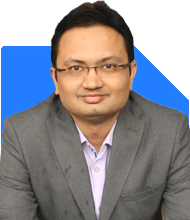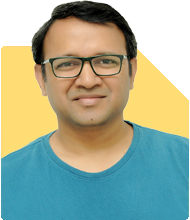Ramalingam Kalirajan |10899 Answers |Ask -Follow
Mutual Funds, Financial Planning Expert - Answered on Oct 24, 2024
He has an MBA in finance from the University of Madras and is a certified financial planner.
He is the director and chief financial planner at Holistic Investment, a Chennai-based firm that offers financial planning and wealth management advice.... more

I want to invest 8000 in SIP for next 17 years, in 50:30:20 ratio. Kindly suggest the best MF to invest
Your proposed allocation of 50:30:20 ratio is also strategic. This means:
50% in Equities: Aimed at growth through higher returns.
30% in Debt Instruments: Provides stability and income.
20% in Hybrid or Balanced Funds: Offers a blend of both equity and debt.
Evaluating Equity Investments
Equity investments are crucial for long-term wealth creation. Here’s how to approach this:
Higher Growth Potential:
Historically, equities outperform other asset classes over time.
They can provide substantial returns if invested wisely.
Long-Term Focus:
Invest in funds with strong fundamentals.
Look for funds with consistent performance and reliable management.
Risk Management:
While equities are riskier, they offer better inflation protection.
Diversification across sectors can mitigate risks.
Assessing Debt Investments
Debt investments are essential for balancing risk. They provide stability to your portfolio. Consider the following:
Stable Returns:
Debt instruments provide regular income through interest.
They can cushion your portfolio during market volatility.
Fixed Income Security:
Debt can safeguard your capital while generating returns.
Ideal for risk-averse investors seeking stability.
Inflation Consideration:
While safer, debt returns may not always outpace inflation.
It is important to regularly reassess your debt allocation.
Exploring Hybrid Funds
Hybrid funds blend equity and debt. They can be a great choice for balanced growth. Here’s why:
Balanced Approach:
These funds adjust their allocations based on market conditions.
They provide exposure to both growth and stability.
Less Volatility:
Hybrid funds typically experience lower volatility than pure equity funds.
They are suitable for investors who want a moderate risk profile.
Ease of Management:
With hybrid funds, you do not have to constantly rebalance your portfolio.
Fund managers make allocation decisions based on market analysis.
Disadvantages of Direct Funds
If you consider investing in direct mutual funds, be aware of the drawbacks:
Lack of Professional Guidance:
Direct funds require you to manage your investments.
This can be challenging without a financial background.
Time-Consuming:
Researching and monitoring funds can be time-consuming.
You may miss opportunities without regular oversight.
Limited Access to Expertise:
You might not have the same access to professional insights.
This can affect your investment decisions and performance.
Advantages of Regular Funds via MFD
Investing through a Mutual Fund Distributor (MFD) with Certified Financial Planner credentials offers several benefits:
Professional Management:
MFDs provide guidance on fund selection based on your goals.
They help you understand market trends and fund performance.
Customized Solutions:
MFDs can tailor investment strategies to your risk profile.
They help align your investments with your financial objectives.
Regular Monitoring:
MFDs keep track of your investments and market conditions.
They can recommend adjustments based on performance.
Convenience:
Investing through MFD simplifies the investment process.
You receive consolidated statements and updates on your portfolio.
Tax Considerations for Mutual Funds
Understanding tax implications is vital for effective investing. Here’s what you need to know:
Equity Mutual Funds:
Long-term capital gains (LTCG) above Rs 1.25 lac are taxed at 12.5%.
Short-term capital gains (STCG) are taxed at 20%.
Debt Mutual Funds:
LTCG and STCG are taxed according to your income tax slab.
Keep these tax implications in mind when planning your investments.
Suggested Investment Strategy
Given your goals and preferences, consider the following investment strategy:
50% in Equity Funds:
Allocate Rs 4,000 per month.
Focus on funds with strong historical performance and management.
30% in Debt Funds:
Invest Rs 2,400 per month.
Choose funds that offer steady income and safety.
20% in Hybrid Funds:
Allocate Rs 1,600 per month.
Look for funds with a good balance of equity and debt exposure.
This allocation allows for growth while maintaining stability. Ensure you review and adjust this strategy regularly.
Final Insights
Your plan to invest Rs 8,000 in a SIP over 17 years is excellent. The 50:30:20 ratio can help you achieve your financial goals.
Consider the pros of actively managed funds through an MFD. They can provide valuable insights and professional guidance.
Regularly review your portfolio to ensure alignment with your goals. This will help you stay on track for long-term success.
Best Regards,
K. Ramalingam, MBA, CFP,
Chief Financial Planner,
www.holisticinvestment.in
https://www.youtube.com/@HolisticInvestment
You may like to see similar questions and answers below
Nikunj Saraf | Answer |Ask -Follow
Mutual Funds Expert - Answered on Nov 29, 2022
Tejas Chokshi | Answer |Ask -Follow
Tax Expert - Answered on Jun 23, 2023
Ramalingam Kalirajan |10899 Answers |Ask -Follow
Mutual Funds, Financial Planning Expert - Answered on May 06, 2024
Ramalingam Kalirajan |10899 Answers |Ask -Follow
Mutual Funds, Financial Planning Expert - Answered on May 18, 2024
Ramalingam Kalirajan |10899 Answers |Ask -Follow
Mutual Funds, Financial Planning Expert - Answered on May 21, 2024
Purshotam Lal |68 Answers |Ask -Follow
Financial Planner, MF and Insurance Expert - Answered on Dec 17, 2025
Ramalingam Kalirajan |10899 Answers |Ask -Follow
Mutual Funds, Financial Planning Expert - Answered on Dec 17, 2025
Ramalingam Kalirajan |10899 Answers |Ask -Follow
Mutual Funds, Financial Planning Expert - Answered on Dec 17, 2025
Ramalingam Kalirajan |10899 Answers |Ask -Follow
Mutual Funds, Financial Planning Expert - Answered on Dec 17, 2025
Ramalingam Kalirajan |10899 Answers |Ask -Follow
Mutual Funds, Financial Planning Expert - Answered on Dec 17, 2025
Ramalingam Kalirajan |10899 Answers |Ask -Follow
Mutual Funds, Financial Planning Expert - Answered on Dec 17, 2025
Mayank Chandel |2576 Answers |Ask -Follow
IIT-JEE, NEET-UG, SAT, CLAT, CA, CS Exam Expert - Answered on Dec 17, 2025
Radheshyam Zanwar |6747 Answers |Ask -Follow
MHT-CET, IIT-JEE, NEET-UG Expert - Answered on Dec 16, 2025
Shalini Singh |181 Answers |Ask -Follow
Dating Coach - Answered on Dec 16, 2025
Patrick Dsouza |1429 Answers |Ask -Follow
CAT, XAT, CMAT, CET Expert - Answered on Dec 16, 2025



























